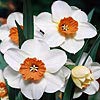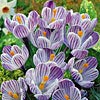-
Spring Planting
Available to order. Order now for best selection.
-
Fall Planting
Available for pre-ordering for Fall Delivery.
-
Landscaping Specials
-
- Spring Landscaping Specials
- Available to order. Order now for best selection.
- Astilbe
- Caladiums
- Cannas
- Dahlias
- Gladiolus
- Hostas
- Lilies
- Mixes & Blends
Big savings on bulk orders! -
- New
- Sale
 MENU
MENU Plant Finder
Plant Finder
 Help
Help- Shopping Cart0 Items Subtotal: $0
- WHOLESALE SOLUTIONS for:
- Landscapers
- Resellers
- Home Gardeners
Flower Bulbs & Perennials at Wholesale Prices
-
Spring Planting
Available to order. Order now for best selection.
-
Fall Planting
Available for pre-ordering for Fall Delivery.
-
Landscaping Specials
-
- Spring Landscaping Specials
- Available to order. Order now for best selection.
- Astilbe
- Caladiums
- Cannas
- Dahlias
- Gladiolus
- Hostas
- Lilies
- Mixes & Blends
Big savings on bulk orders! -
- New
- Sale










